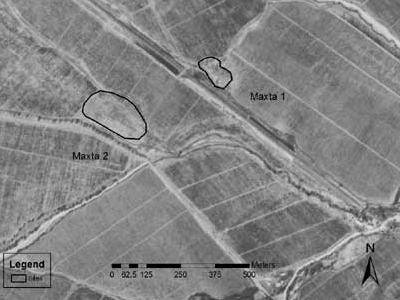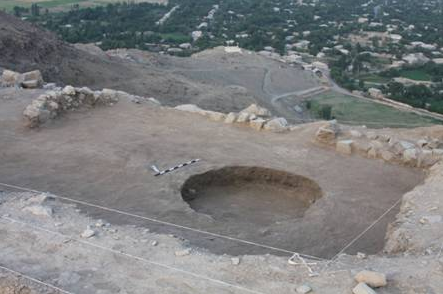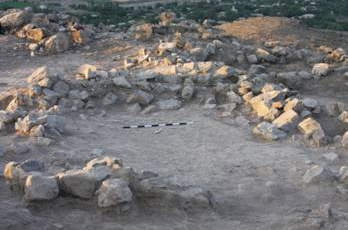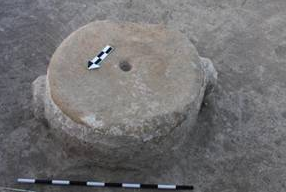Our work in the summer of 2006 laid the foundation for a long term collaborative project between American and Azerbaijani scientists.
First, we initiated an archaeological survey of the Arpaçay in Sharur Rayon in western Naxçivan (Figure 1 and Figure 2), where we visited 45 sites along this wadi ranging in age from the Eneolithic to the Medieval period. These sites included sherd and lithic scatters, cemeteries, fortresses and tepes.
Second, we excavated 2X2m soundings at two mounds (tepes, tells), Kültepe 2 and Maxta 1, that were inhabited throughout the Kura-Araxes period (ca. 3500-2400 BC) (Figure 3). Archaeologists have found Kura-Araxes pottery in the Northern and Southern Caucasus, Iran, Anatolia and even the Southern Levant—making this the most spatially extensive material culture known from the prehistory of Western Asia.
Yet we are still unsure about the nature of the societies of the people who once ate from this red and black burnished pottery, cooked supper with the help of horse-shoe shaped portable hearths or lived in these distinctive circular houses. At Maxta 1 and Kültepe 2, we were able to reconstruct radiocarbon dates that spanned this millennium, helping us to better understand the absolute chronology of the period.
We also focused on investigating the economic basis of these two ancient settlements, in order to see whether pastoral migrations might help to explain the spread of this material (Figure 4). Analysis of the botanical and faunal remains is ongoing and should shed light on this poorly understood phenomenon (Figure 5).




